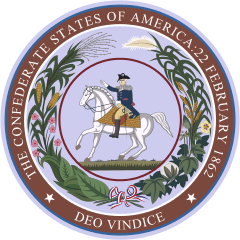14th Tennessee Infantry
The 14th Tennessee Regiment was organized at Camp Duncan, Clarksville in May 1861 by Col. W. A. Forbes,[1]
Below is a more complete and accurate narrative concerning the 14th Tennessee Volunteer Infantry regiment.
A total of almost 1,000 officers and men served in the 14th Tennessee, but only 40 remained when the regiment at Appomattox in April 1865. Taking part in more than two dozen battles and engagements, the regiment was decimated, tattered and exhausted. At Gettysburg alone, the regiment lost 58 percent of the men who entered the battle.
Originally organized in May 1861, at Clarksville, Tennessee, the 14th almost immediately received orders transferring it to the Virginia theatre. Here the regiment remained for the duration of the war and served with distinction in the Army of Northern Virginia, until its final capitulation. During this time, the 14th Tennessee fought in virtually every major battle or campaign conducted by Robert E. Lee.
The 14th served as part of James J. Archer's famed "Tennessee" brigade assigned to A.P. Hill's Light Division. Hill's men earned a hard won reputation for making critical counterattacks preserving Confederate victories at Cedar Mountain, Second Manassas and Sharpsburg. The 14th fought in the van of each of Hill's desperate onslaughts. At Chancellorsville, Archer's Brigade seized the critical high ground of Hazel Grove, forcing the Union right wing to fold back upon its center and allowing Lee to reunite his divided forces in the face of a numerically superior enemy.
Gettysburg nearly destroyed both the 14th Tennessee and Archer's brigade. On the first day of battle, along Willoughby Run, the famous Union Iron Brigade turned Archer's unsupported flank. His command retreated in wild confusion. The 14th had just devastated the 2nd Wisconsin with withering volley fire at close range when it discovered itself alone and exposed on the right and rear. Using the protection of Herbst Woods, the 14th retired in good order.
After a day's rest, Lee assigned the remnants of the "Tennessee Brigade" to a special task force under Pettigrew to join Pickett's all "Virginia" division in an attack upon the Union center. What remained of Archer's brigade now formed the hinge joining Pettigrew's and Pickett's men. Together, they formed a battle array of more than 10,000 troops, stretching almost a mile wide. The men from Tennessee aligned on Pickett's left and went in at The Angle alongside the shattered Virginians. Long before any one reached the wall, Union fire slaughtered men in droves. An eyewitness, reporting on Archer's men, wrote:
"Every flag in the brigade excepting one was captured at or within the works of the enemy. The 1st Tennessee had 3 color-bearers shot down, the last of whom was at the works, and the flag captured. The 13th Alabama lost 3 in the same way, the last of whom was shot down at the works. The 14th Tennessee had 4 shot down, the last of whom was at the enemy's works. The 7th Tennessee lost 3 color-bearers, the last of whom was at the enemy's works, and the flag was only saved by Captain Norris tearing it away from the staff and bringing it out beneath his coat. The 5th Alabama Battalion also lost their flag at the enemy s works."
The colors of the 14th Tennessee were among the first to pierce the Union line and it lost heavily in captured men. At the time, the banner of the 14th bore battle honors for the fighting at Seven Pines, Mechanicsville, Cold Harbor, Shepherdstown, Fredericksburg, Chancellorsville, Ox Hill, Harper's Ferry, Sharpsburg, Frazier's Farm, Cedar Run and Manassas. Barely 100 men reformed the regiment on the following day.
Despite its losses, the 14th Tennessee and the rest of Archer's once proud brigade continued to serve in Heth's division of AP Hill's III Corps. They added additional honors to their record for service at Falling Waters, Bristoe Station, Mine Run, The Wilderness, Spotsylvania, Cold Harbor, Petersburg, Globe Tavern, Weldon Railroad, Reames' Station, Burgess' Tavern, and Hatcher's Run.
References
- ↑ Regimental Sketches Retrieved 4 October 2008

